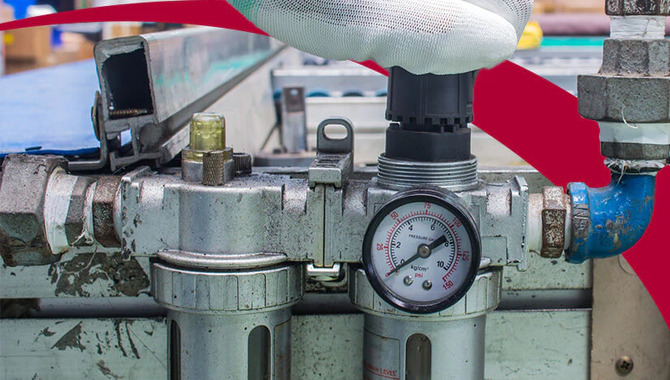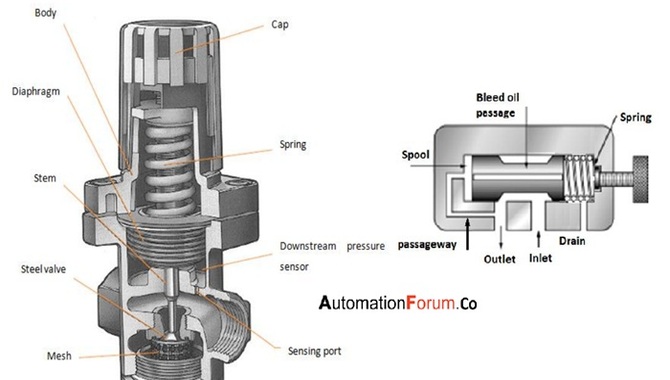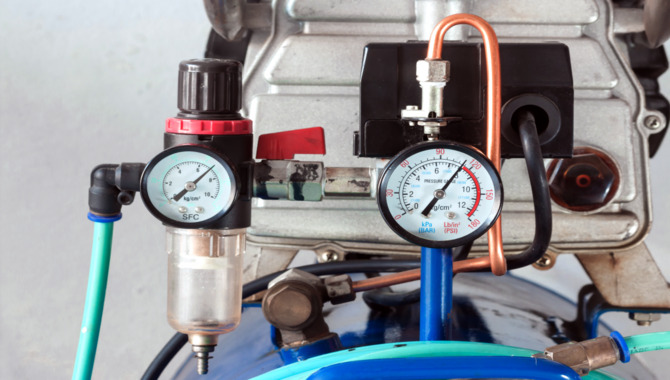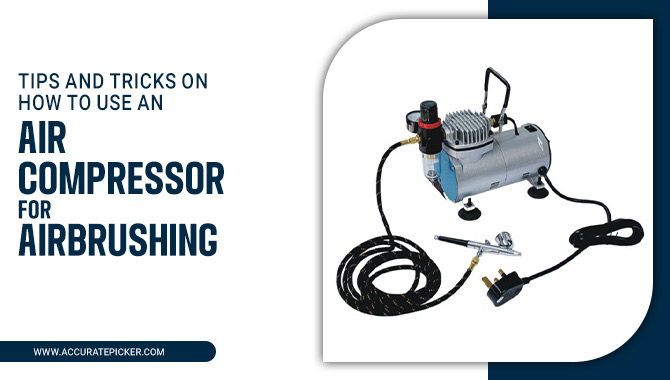An air compressor is versatile in various applications, from powering tools to inflating tires. The pressure level of an air compressor is crucial to its performance and efficiency.
Adjusting the pressure on an air compressor is a simple process that requires minimal effort. Before adjusting the pressure, turning off the compressor and releasing any pressure in the air tank is essential. Once the compressor is off, locate the pressure regulator and adjust the pressure using the knob or dial.
Turn the knob clockwise to increase the pressure and counterclockwise to decrease it. It is important to check the pressure gauge periodically to ensure the pressure remains at the desired level.
Always refer to the manufacturer’s instructions before adjusting the pressure on an air compressor to avoid damaging the tool or risking injury. These simple steps explain how to adjust the pressure on an air compressor and ensure its optimal performance.

How Does An Air Compressor Work?
An air compressor uses an electric motor or gas engine to power a pump. The pump draws in air and compresses it, increasing the pressure and decreasing the volume. The tank stores the compressed air until it is needed. When the compressed air is released from the tank, it powers various tools and equipment. Some common uses for compressed air include inflating tires, powering pneumatic tools, and operating machinery.
What Is The Purpose Of Adjusting Pressure On An Air Compressor?

The purpose of adjusting pressure on an air compressor is to regulate the amount of air being compressed and delivered. This is necessary because different tools and equipment require different air pressure levels to operate effectively and safely.
Adjusting the pressure can also help conserve energy and prolong the compressor’s life by reducing wear and tear on its components. Proper pressure regulation is crucial for achieving optimal performance and efficiency from an air compressor.
What Tools Are Needed To Adjust The Pressure On An Air Compressor?
To adjust the pressure on an air compressor, you will need a pressure gauge and a screwdriver or wrench to adjust the pressure regulator. Some air compressors may require additional tools or specific instructions, so it’s important to consult the owner’s manual for your specific model.
How To Adjust The Pressure On An Air Compressor For Maximum Efficiency

Adjusting the pressure on an air compressor can maximise efficiency by reducing wasted energy and wear on the compressor. When the pressure is too high, it produces excess air, causing leaks and decreasing the lifespan.
On the other hand, if the pressure is too low, the compressor will work harder to produce the required air pressure, leading to higher energy costs. By adjusting the pressure to the optimal level, the compressor can work efficiently, saving energy and money in the long run. Follow these steps to learn how to adjust the pressure on an air compressor pressure for maximum efficiency:
- Turn off the compressor and disconnect any air tools or hoses.
- Locate the pressure switch and the adjustment knob.
- Use a pressure gauge to measure the current pressure in the tank.
- Turn the adjustment knob clockwise to increase the pressure or counterclockwise to decrease it.
- Adjust the pressure to the manufacturer’s recommended level, which you can find listed on the compressor or in the manual.
- Turn the compressor back on and wait for it to reach the new pressure setting.
- Reconnect any air tools or hoses and test the air pressure to ensure it is at the desired level.
- Repeat the process as needed until the compressor is operating at maximum efficiency.
How To Identify Different Types Of Pressure Adjustment Mechanisms?

You can start by looking at the device or equipment you are working with to identify different pressure adjustment mechanisms. Some common pressure adjustment mechanisms include pressure regulators, relief valves, and back pressure valves.
In addition, you can consult the equipment manual or research online to learn more about the specific pressure adjustment mechanisms used in your equipment. It’s important to understand the differences between these mechanisms and how they function to adjust and maintain pressure levels as needed properly.
How To Troubleshoot Pressure-Related Issues On An Air Compressor?
When troubleshooting pressure-related issues on an air compressor, there are a few steps to follow. First, check the pressure switch to ensure it is set correctly. Next, inspect the air filter and clean or replace it if necessary.
Then, check the air compressor’s valves and ensure they function properly. If these steps do not solve the issue, you may need to inspect the pressure regulator or the compressor’s motor. It is also important to regularly maintain and service your air compressor to prevent pressure-related issues from occurring in the first place.
How To Check For Leaks Or Other Problems After Pressure Adjustment?

After adjusting the pressure of a system, it is important to check for leaks or other potential problems. One way to do this is to use a pressure gauge to monitor the pressure over time. If the pressure drops significantly, there may be a leak. Inspecting the system for visible leaks or damage can also help identify any issues. It is important to address problems promptly to ensure the system operates safely and efficiently.
Safety Precautions When Adjusting Pressure On An Air Compressor
When adjusting the pressure on an air compressor, you should take several safety precautions. Firstly, ensure that the compressor is turned off and unplugged before adjusting. Use a gauge to measure the current pressure and identify the desired pressure level.
Make gradual adjustments to the pressure rather than large and sudden changes. Always wear appropriate safety gear, such as eye and ear protection, and avoid standing directly in front of the compressor during adjustments. Regularly maintain and inspect the compressor to ensure it is in good working condition, and refer to the manufacturer’s instructions for specific safety guidelines.
How To Troubleshoot And Repair An Air Compressor?

Repairing an air compressor depends on the specific issue it is experiencing. Some common problems include leaks, inadequate pressure, and motor issues. To repair a leak, check the air hose and fittings for damage and replace them if necessary.
For inadequate pressure, check the pressure switch and adjust it if needed. Motor issues may require replacing the motor or its components. It is important to refer to the manufacturer’s instructions and safety precautions when repairing an air compressor. If you are not comfortable with DIY repairs, it is recommended that you seek professional help.
Properly Maintaining And Monitoring The Air Compressor’s Pressure Over Time
Proper maintenance and monitoring of an air compressor’s pressure over time can prolong the compressor’s life and prevent breakdowns. Check the pressure regularly and adjust it as needed. Keep the compressor clean and change the oil and air filters on schedule.
Address any leaks immediately and inspect hoses and connections. Follow the manufacturer’s recommendations for maintenance and consider investing in a pressure monitoring system for added convenience.
The Benefits Of Regularly Adjusting Air Compressor Pressure

Regularly adjusting air compressor pressure can provide several benefits. Firstly, it can improve the efficiency of the compressor, resulting in lower energy costs. Secondly, it can extend the compressor’s lifespan by reducing the wear and tear on its components.
Thirdly, it can ensure that the compressed air being used is at the optimal pressure for the specific application, which can improve the quality of the end product. Finally, it can enhance workplace safety by preventing over-pressurization and related accidents.
Overall, regularly adjusting air compressor pressure is a simple yet effective way to optimize the compressor’s performance and improve productivity and safety in the workplace.
Conclusion
knowing how to adjust the pressure on an air compressor is necessary for any professional who uses compressed air tools. Following the manufacturer’s instructions and safety guidelines is important to avoid accidents. By regularly checking and adjusting the pressure, you can ensure that your tools are working efficiently, saving you time and money in the long run.
Always wear appropriate safety gear, such as eye protection and earplugs, and shut off the compressor when making adjustments. With these tips in mind, you can confidently adjust the pressure on your air compressor and get back to work.
FAQ’s
1.Why Would I Need To Adjust The Pressure On My Air Compressor?
Ans: You may need to adjust the pressure on your air compressor if you use different tools or need to increase or decrease the airflow.
2.How Do I Adjust The Pressure On My Air Compressor?
Ans: First, turn off the air compressor and unplug it. Then, locate the pressure adjustment knob and turn it clockwise to increase the pressure or counterclockwise to decrease it. Check the pressure gauge to ensure you are adjusting to the desired pressure.
3.How Do I Know What Pressure To Set My Air Compressor?
Ans: The pressure you need will depend on the tool you are using. Check the manufacturer’s instructions for the recommended pressure range.
4.What If I Can’t Find The Pressure Adjustment Knob On My Air Compressor?
Ans: Some air compressors may have the pressure adjustment knob integrated into the regulator. Consult the owner’s manual for instructions on how to adjust the pressure.
5.Can I Adjust The Pressure While The Compressor Is Running?
Ans: No, you should always turn off and unplug the air compressor before adjusting the pressure to avoid the risk of injury.




![7 Best Spray Gun For Small Compressor [Reviews With Buying Guide]](https://accuratepicker.com/wp-content/uploads/2023/07/Best-Spray-Gun-For-Small-Compressors.jpg)
